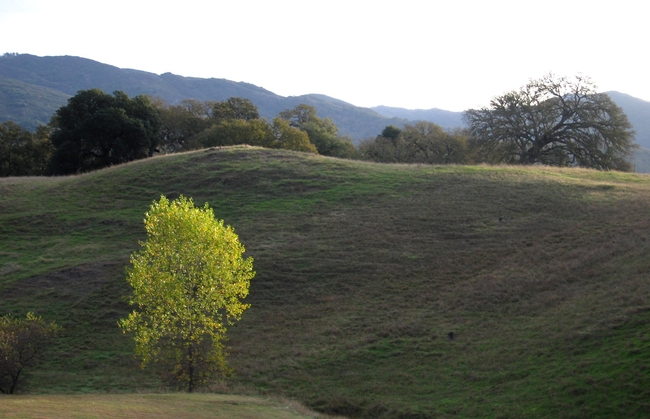The Fremont Cottonwood (Populus fremontii) is a cottonwood popular tree that is native to western North American. It is a common deciduous tree found in riparian areas ... those areas near streams, rivers, spring seeps, and wetland areas. The UC Hopland Research and Extension Center has a scattering of these trees.
Shown here is one that I drive past everyday to work along the University Road ... and on certain mornings as the early morning sunshine breaks through a saddle-gap, the tree is spot-lighted in sunshine. This sun-lighted focus reminds me that this species is represented by the largest flowering plant in the U.S. which is a tree located at Santa Cruz, Arizona. According to the National Register of Big Trees, it has a 42 foot circumference, a height of 92 feet, and a crown spread of 108 feet. I have seen this tree and it is immense.
The species is named after Captain John Charles Fremont, who led several exploratory expeditions including the Second Topographical Expedition in 1843 to map the Oregon Trail. In 1844 his team of men crossed the snow-packed Sierra Nevadas to reach Sutter Fort ..a feat that the Washoe Indians forewarned him to be impossible.
Before the Mexican War began, Fremont encouraged a band of disgruntled settlers near Sonoma to overtake General Mariano Vallejo's headquarters, and with the acceptance of surrender the territory was claimed "California a Republic" for which the Bear flag was raised over the plaza. This led to the independence of the California Republic on July 4th, 1846. He also named the the mouth of the San Francisco Bay in 1848, saying, "To this Gate I give the name of Chrysopylae, or Golden Gate; for the same reasons that the harbor of Bryzantium was called Chrysoceras, or Golden Horn."
